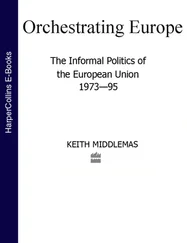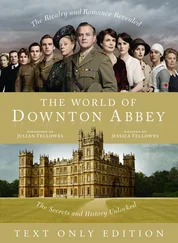How could they know that he was to become one of the century’s most celebrated artists? Who would tell the ‘rather superior but nice young man’ from the Maidenhead branch of W. H. Smith’s that the eager, talkative, wiry and boyish young man sitting opposite him was someone whose paintings were already attracting attention? To the others in the party he was just another recruit, good at drawing and something of an artist. But, like Stanley, they knew that as the train drubbed westwards they were being carried away from the familiar and, in Stanley’s case, the beloved. The agony of that day was to infuse one of Stanley’s most remarkable paintings, his Christ Carrying the Cross.
CHAPTER TEN
Christ Carrying the Cross
Painting with me was the crowning of an already elected king.
Stanley Spencer 1
ACADEMIC CATALOGUING stresses the chronological dating of an artist’s work. In Stanley’s case, the exact date of painting may bear little relation to the emotions of its genesis. He could, as in The Centurion’s Servant , be attracted (1913) to a theme for one reason, fail to find any suitable visual association, let the project gestate and then (October 1914) discover that his current emotional circumstance provided just the trigger he needed. In subsequent paintings the gap could extend over many years. On the other hand he could happily paint a picture, keep it unseen for years, then suddenly produce it out of current context. So too he could produce what seemed to be a new work but one which proved to be essentially a reworking of themes in earlier works. Stanley’s life and art cannot be compartmentalized. Both were a vast rolling pageant in which each new painting related to what had gone before and would illuminate those which were to follow.
Consider his emotions on that day of leaving Cookham for the war. There was natural apprehension about how he would fit into his new life. But the greater fear was that of the rupture of his Cookham spiritual life which he guessed must follow, and of the hurt to his father who valued him and his mother who, despite her brave front, was anxious for him. He was the last of their sons young enough to go: ‘In the months that followed the declaration of war, I [Florence] was called upon time and time again to stand by the younger sons as one by one, letting their little mother down as gently as possible, they took up their Cross and went.’ 2
Christ Carrying the Cross , an evocation of the Fourth Station of the Cross, can be interpreted as a flowering of such feelings. It was not in fact painted until after the war, in 1920, but its detail is so apt to Stanley’s recorded description of the day he left home that a correspondence is inescapable. We can begin with the three figures in the centre of the bottom part of the picture to the right of the line of five men looking through railings. This trio, Stanley says, depicted himself and friends: ‘As youths we stood in a gate opposite our house [presumably the gate of Ovey’s Farm] and watched people go by on Sundays and in the evenings. The three men in the central part of the bottom of the picture form the onlooker part of the scene’ 3– so that by implication all the others are participants. Once more Stanley stands outside an emotional situation in order to watch a transcendence of his feelings into visualized allegory. He later likened the scene and its watching youths to a newspaper account of crowd reaction at the funeral of Queen Victoria. The journalist, anxious to convey the solemnity of the occasion, proclaimed that ‘women openly wept and strong men broke down in side streets’, 4an overstatement which became a catchphrase, and one which Stanley would merrily quote on occasion.
‘To the left of the picture is a wide street coming towards the spectator, through the iron palings at the side of which other men peer down at the stooping figure of the Virgin.’ 5There being in reality no ‘wide street coming towards the spectator’ at the side of Fernlea – the house shown in the painting has been coalesced into Fernlea-Belmont – Stanley has emotionally eliminated all the buildings between it and Sutton Road, the ‘wide street’ down which he went on his way to Maidenhead to avoid lingering memories of Cookham. *He has thus slid together in association the two notions of ‘home’ and ‘departure from home’. Fernlea-Belmont has taken the situation in the village of the Methodist Chapel. Ma, who felt the parting so keenly, has become metamorphosed into the Virgin Mary, not because Stanley saw her sentimentally in that guise, but because he is sympathetically capturing in the transfiguration the utter agony of her feelings. She is a distraught figure barred from her son by the ‘iron palings’ – Stanley has given them the semblance of military spears – ‘at the side of which other men peer down’. Examine these other men. Each is a manifestation of a white-faced, agonized Stanley. They are the five Spencer sons gone to war of Gilbert’s Crucifixion.
Stanley ‘looks down’ on Ma, for in the kinesis of emotion in the painting, Ma is now a receding, diminutive figure, appearing as she must have done when in boyhood he climbed the walnut tree in the back garden of Fernlea, the tree from which he could ‘survey the worlds not only in our own garden but the other gardens beyond’, 7so giving him once again the feeling of distance and isolation which this sad occasion invokes. As an associative element, the feeling is brought into the picture as the ivy which covered the neighbouring cottage, The Nest, in which an elderly couple, the Sandells, now lived. Stanley’s grandmother had come to live at the cottage when old Julius died, his business being continued by a son of the previous marriage, Stanley’s ‘Uncle John’. Old Mr Sandell had been one of the firm’s employees and was allocated the cottage when the grandmother died.
A resolute Christ – with the profile of Pa – is escorted by four soldiers whose winged helmets reproduce those worn in early Renaissance paintings. *Followers, or disciples, are with Christ. He too is about to round the corner into Sutton Road, to leave behind his lingering memories of Jerusalem. On the right, men shoulder the ladders of Bosch’s version of the event to mount Christ on the Cross, but for Stanley they are Fairchild’s builders’ men counterpointing the tension by carrying their ladders to some prosaic job at which they are due, the imagery of Cross and ladders interlinked. They go about their business indifferent to the young man in a raincoat and straw hat who carries his gladstone bag up the street; just another recruit off to the war like so many other young men of the time. Passers-by hold up their hands to shield their eyes from the low July sun as they watch. *From the windows of Fernlea-Belmont a congregation of figures, echoes of Stanley’s family, of himself in childhood happiness, of his uncles, aunts, cousins, friends and family maids, look out to reinforce his memories of home. Old Mr and Mrs Sandell, whom the family loved and who loved them, are at the side window of The Nest. The lace curtains blown out by the draught from the open windows on that sultry summer day have been transformed into wings. The onlookers in their silent commiseration have taken on the protectiveness of angels.
When some years later the Tate Gallery showed the painting, they mistitled it Christ Bearing His Cross , which for Stanley implied ‘a sense of suffering which was not my intention. I particularly wished to convey the relationship between the carpenters behind him carrying the ladders and Christ in front carrying the cross, each doing their job of work and doing it just like workmen. … Christ was not doing a job or his job, but the job.’ 8
Читать дальше









![Brian Thompson - A Monkey Among Crocodiles - The Life, Loves and Lawsuits of Mrs Georgina Weldon – a disastrous Victorian [Text only]](/books/704922/brian-thompson-a-monkey-among-crocodiles-the-life-thumb.webp)


